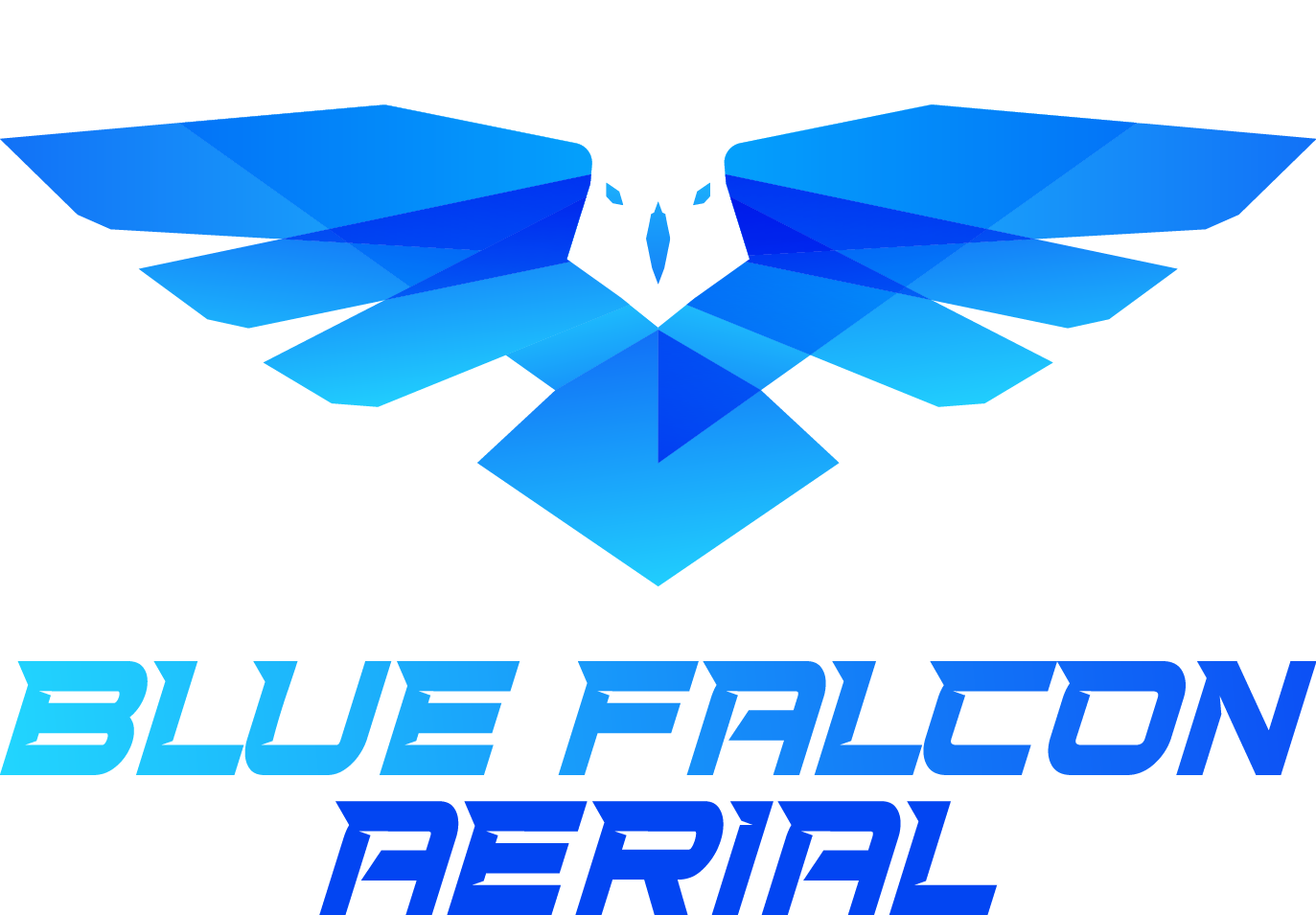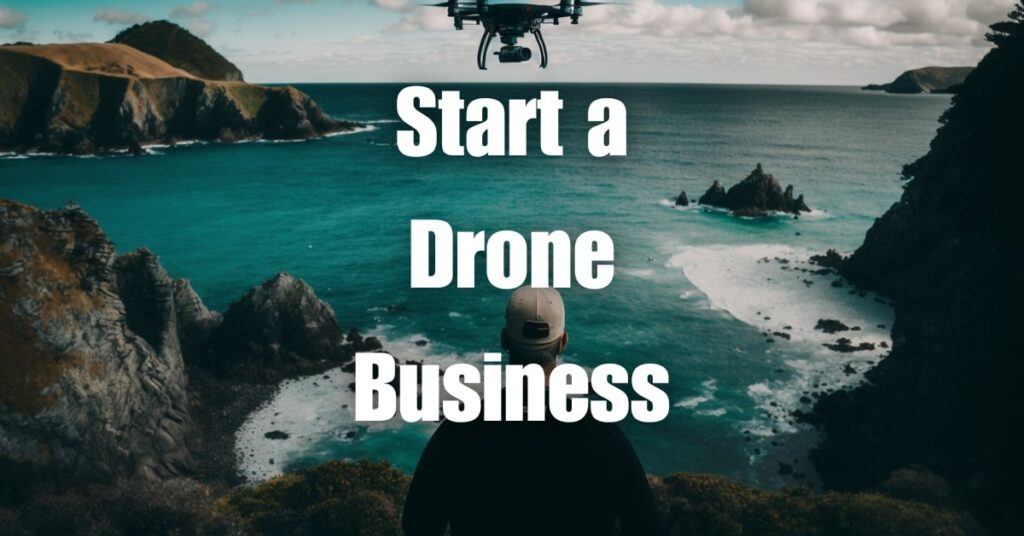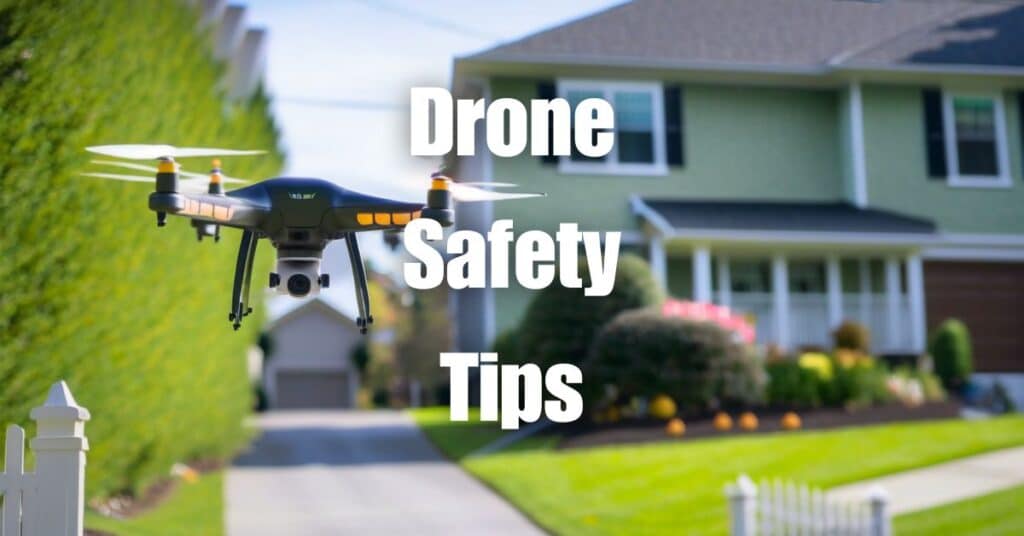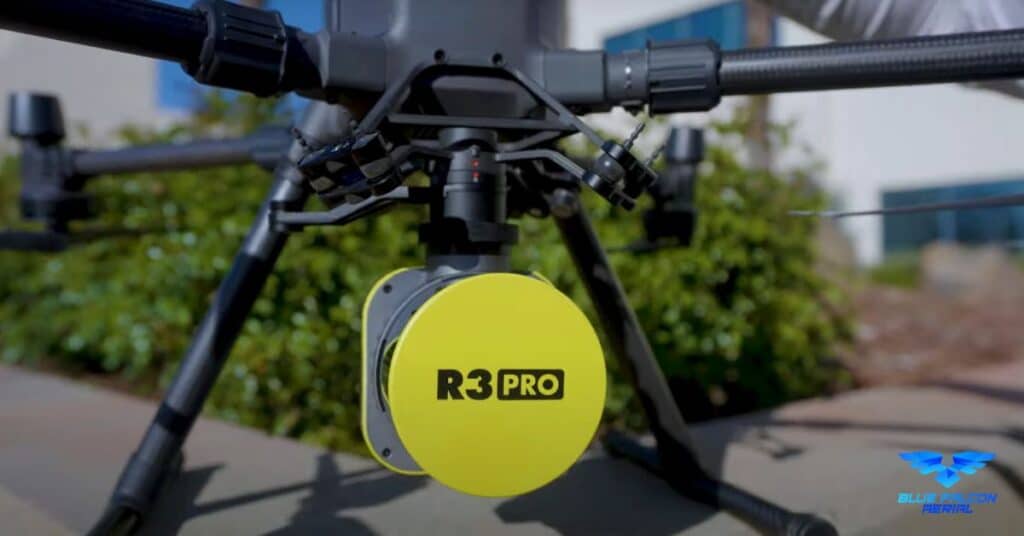Dive into the “Soaring High: A Comprehensive Guide to Building and Growing Your Drone Business” – a thorough manual tailor-made for ambitious entrepreneurs, drone aficionados, and industry experts aspiring to seize the thriving drone industry. We commit to offering you easy-to-follow directives, exclusive tips, and invaluable insights for establishing a prosperous drone enterprise from the ground up. Regardless of whether your plan includes providing aerial imagery, surveying, mapping, or any other drone-centric services, we have it all covered.
Key Takeaways
- Drone Market Overview: The article provides an insight into the current trends and growth potential of the drone market, emphasizing its expanding applications across various sectors.
- Drone Business Types: It categorizes drone businesses based on sensor requirements, highlighting the diversity in the sector including photography, videography, orthomosaic, photogrammetry, LiDAR, thermography, multispectral imaging, optical gas detection, and drone delivery.
- Business Model Exploration: Different business models in the drone industry are explored, including traditional, contracting agency, and aggregator models.
- Strategic Considerations: Key considerations for each business type and model are discussed, such as equipment needs, skills, training, software, collaboration, licensing, and regulations.
- Market Entry and Growth Strategies: The guide offers strategies for entering the drone market and scaling the business effectively.

Understanding the Drone Industry
Exploring the Drone Industry: Trends and Opportunities
The drone industry is rapidly evolving, experiencing significant growth due to technological advancements and its increasing use in diverse sectors. Let’s dive into the current trends and analyze the market to understand the growth potential and opportunities within this dynamic sector.
Current Trends in the Drone Market
The drone market is experiencing robust growth and is expected to continue this upward trend. Innovations in technology, expanding applications, and changing regulations are driving this promising market outlook. According to a PwC report, the global drone market is anticipated to soar to an impressive $127 billion by 2025.
- Diverse Applications: Initially popular in photography and videography, drones are now used in agriculture, infrastructure inspection, emergency response, and package delivery. This variety offers numerous opportunities for businesses looking to enter or expand in the drone industry.
- Technological Advancements: Improvements in flight time, payload capacity, and data collection have made drones more efficient and versatile. As technology evolves, new business prospects emerge, pushing the market forward.
- Regulatory Landscape: Governments worldwide are updating drone regulations, balancing innovation encouragement and public safety. This clarity provides a safer and more defined operational framework for drone businesses.
Staying updated on the latest trends and market dynamics is vital for businesses seeking to leverage the growing drone industry.
Reliable Sources for Drone Market Insights
To stay informed, it’s essential to follow credible sources within the drone industry:
- DroneDeploy: This leading drone software company provides valuable market insights through its blog and industry reports.
- DJI: As a top drone manufacturer, DJI shares updates on emerging drone technologies and applications.
- FAA: The Federal Aviation Administration provides crucial information on regulations and industry data, especially for U.S.-based drone operations.
Following these sources will help you make informed decisions and strategically position your business for success in the fast-expanding drone market. By understanding the evolving trends, technological advancements, and regulatory changes, businesses can capitalize on the abundant opportunities in this thriving industry.
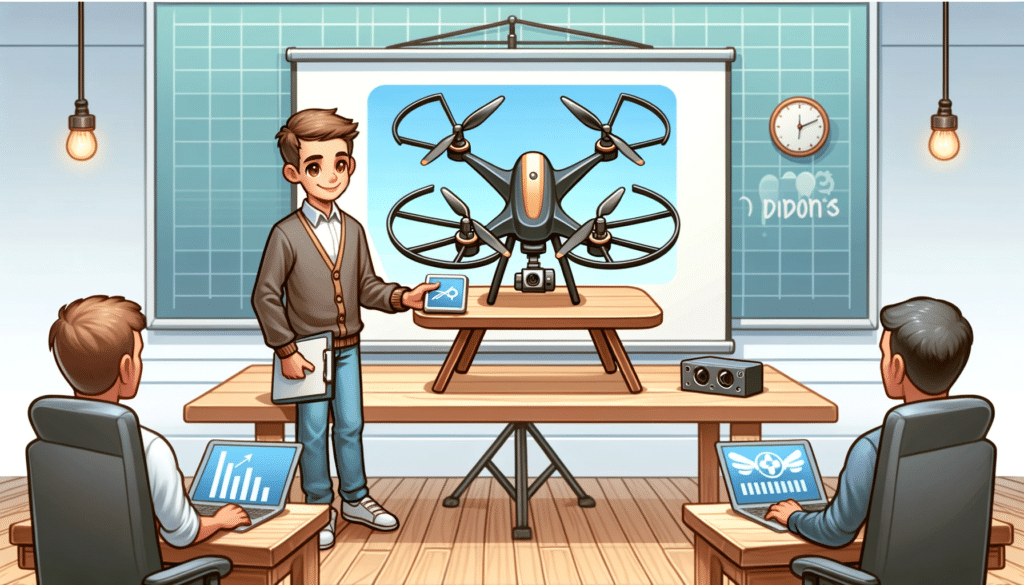
Types of Drone Businesses
A more practical way to comprehend the diversity of drone businesses involves categorizing them according to their sensor requirements. Drones can be outfitted with a range of sensors, each offering unique advantages and drawbacks for different applications. For instance, thermal imaging excels at spotting heat signatures in buildings and infrastructure, while high-resolution cameras are the go-to for capturing intricate imagery of landscapes and structures.
By honing in on a specific sensor and its applications, businesses can provide more focused and specialized services to their clientele. Conversely, clients can better identify the drone business most suited to their needs. In the ensuing segment, we will delve into various types of drone businesses dictated by their sensor requisites.
Capturing Breathtaking Views: Drone Photography and Videography
The realms of photography and videography have been revolutionized by drones. Equipped with high-resolution cameras, these flying marvels offer stunning visuals and unique perspectives from the skies, making them pivotal in various sectors.
Diverse Uses of Drone Imaging
- Real Estate: Aerial photos and videos elevate property presentations, highlighting features and offering a complete view of the area. This innovation is now a key tool for real estate agents and developers.
- Weddings and Events: Increasingly popular at weddings and events, drones provide unique angles and enhance coverage, capturing memories in a whole new light.
- Tourism and Travel: Drones showcase tourist spots, hotels, and resorts with captivating aerial shots, attracting visitors with beautiful landscapes and key attractions.
- Advertising and Marketing: Creating standout promotional content, drones help businesses in various sectors to differentiate themselves and effectively communicate their brand message.
- Film and Television: In filmmaking, drones have become essential for dynamic aerial shots, reducing the need for expensive alternatives like helicopters.
Key Considerations for Drone Imaging Businesses
- Quality Equipment: Invest in high-quality drones with reliable cameras and gimbals for professional footage. Regularly updating your tech is key to staying ahead.
- Skills Development: Enhance your piloting and imaging skills through practice, workshops, or online courses. Keep up with current trends and techniques.
- Post-Production Excellence: Hone your editing skills with professional software to produce polished, high-quality final products.
- Impressive Portfolio: Build a portfolio that showcases your diverse skills in drone imaging. This is crucial in attracting clients and demonstrating your expertise.
- Legal Compliance: Stay informed about drone regulations, including necessary certifications like the FAA Part 107 for commercial use in the U.S.
Focusing on these elements can help you build a successful drone photography and videography business. With the growing demand for aerial imagery, there are ample opportunities across various industries. Discover more insights in the subsequent sections of this guide.
Mapping with Drones: Orthomosaic and Photogrammetry
Orthomosaic and photogrammetry are specialized applications in drone technology, creating detailed, high-resolution maps and 3D models from aerial imagery. These methods are becoming increasingly popular in sectors like surveying, construction, and agriculture. Businesses offering orthomosaic and photogrammetry services can tap into this growing market, providing valuable solutions to clients.
Expanding Applications of Drone Orthomosaic and Photogrammetry
- Land Surveying and Mapping: Equipped with high-resolution cameras, drones can quickly map large areas, providing intricate topographic data. This reduces time and resources compared to traditional surveying.
- Construction and Infrastructure: In construction, orthomosaic maps and 3D models aid in project planning, monitoring, and documentation. They’re also useful for inspecting infrastructure like roads and bridges.
- Agriculture and Forestry: These techniques help in assessing crop health, optimizing irrigation, and monitoring forest growth, enhancing resource management and productivity.
- Environmental Monitoring: They offer insights into natural habitats, aiding in ecosystem management and conservation.
- Archaeology and Cultural Heritage: Drones provide non-invasive methods to document and preserve archaeological sites and cultural heritage.
Building a Drone Orthomosaic and Photogrammetry Business
- Cutting-Edge Equipment: Use drones with high-resolution cameras and necessary sensors for accurate data. Upgrading equipment with technological advancements is key.
- Skill Development: Master orthomosaic and photogrammetry techniques, including image processing and 3D modeling. Stay updated on industry trends and software advancements.
- Specialized Software Proficiency: Become proficient in software like Pix4D, DroneDeploy, or Agisoft Metashape for efficient data processing.
- Industry Collaboration: Forge connections with professionals in relevant industries. Networking with surveyors, construction firms, and environmental groups can build a strong client base.
- Regulatory Compliance: Follow local drone operation laws and secure necessary certifications, such as the FAA Part 107 in the U.S.
By focusing on these areas, businesses can establish a thriving orthomosaic and photogrammetry service, meeting the growing need for precise and efficient mapping solutions. For further insights into these technologies, don’t miss our detailed guide on photogrammetry and orthomosaics.
Precision Mapping with LiDAR Technology
LiDAR, or Light Detection and Ranging, is an advanced remote sensing technology. Using laser pulses, it measures distances to create detailed and accurate 3D environmental models. The adoption of drone-mounted LiDAR systems has significantly grown across various industries, offering advantages like enhanced speed, accuracy, and accessibility over traditional methods. Incorporating LiDAR into a drone business opens doors to a lucrative market with wide-ranging applications.
Diverse Uses of Drone LiDAR
- Surveying and Mapping: LiDAR-equipped drones quickly map large areas, providing essential topographic data for land surveying, urban planning, and resource management.
- Infrastructure Inspection: Efficiently inspect power lines, bridges, and railways, identifying maintenance needs and potential issues.
- Forestry and Vegetation Management: Assess forest health, monitor tree growth, and plan sustainable logging with LiDAR data, leading to better resource management.
- Environmental Studies: Gain insights into habitats, water systems, and landforms, aiding in ecosystem management and conservation.
- Mining and Quarrying: Survey mines and quarries safely, collecting vital data for operational efficiency and safety.
Building a Successful Drone LiDAR Business
- Top-Tier Equipment: Choose drones compatible with LiDAR sensors. Regular updates to your technology are essential to stay competitive.
- Skills Enhancement: Develop your expertise in LiDAR data processing and analysis. Consider workshops, online courses, or partnering with experts.
- Proficient in LiDAR Software: Master software like Global Mapper or Terrasolid for efficient data processing. Delivering high-quality 3D models is key.
- Strategic Collaborations: Network with industry professionals who need LiDAR services. Building relationships with surveyors and engineers can create a strong client base.
- Regulatory Adherence: Ensure compliance with drone operation laws. Obtain certifications like the FAA Part 107 for commercial operations in the U.S.
By concentrating on these aspects, you’re well on your way to establishing a prosperous drone LiDAR business, tapping into the growing need for precise remote sensing solutions. For more insights into LiDAR, don’t miss our comprehensive guide on this transformative technology.
Harnessing Heat Vision: The Power of Drone Thermography
Thermography, also known as thermal imaging, is a fascinating technology that captures infrared radiation to visually map temperature differences. Integrating thermal cameras with drones opens a world of opportunities for efficient thermal inspections and analysis across diverse sectors. Adding thermography services to your drone offerings can unlock access to a booming market and provide substantial value to clients.
Wide-Ranging Uses of Drone Thermography
- Building Inspections: Drones equipped with thermal cameras can spot heat loss, water leaks, and insulation flaws in buildings, enabling effective maintenance and energy management.
- Electrical and Mechanical Systems: Thermal imaging identifies overheating components, preventing equipment failure and reducing maintenance costs.
- Agricultural Insights: In agriculture, thermography helps assess crop health, spot irrigation issues, and detect pests, improving resource management and boosting yields.
- Solar Panel Efficiency: For solar farms, drones quickly inspect panels, pinpointing any that are damaged or underperforming, thus ensuring maximum energy production.
- Search and Rescue Missions: In search and rescue operations, drones with thermal cameras are invaluable in locating people or animals, particularly in dense or dark environments.
Essentials for a Successful Drone Thermography Business
- State-of-the-Art Equipment: Use drones that can carry thermal cameras, ensuring high-quality thermal imagery. Keep pace with technological advancements to remain competitive.
- Skill Enhancement: Master thermal imaging techniques, data analysis, and interpretation. This might include workshops, online courses, or partnerships with experts.
- Software Mastery: Become adept with specialized thermal data processing software like FLIR Tools or IRT Cronista. Efficiently delivering detailed thermal reports is crucial.
- Professional Networking: Establish connections with industry professionals who need thermography services, such as engineers or agricultural experts, to build a solid client network.
- Regulatory Compliance: Adhere to local drone regulations and obtain necessary certifications, like the FAA Part 107 for commercial use in the U.S.
By focusing on these core areas, you can carve out a niche in the growing field of drone thermography. This specialization offers myriad opportunities for accurate and effective thermal imaging solutions across a range of industries.

Exploring the Invisible: The Power of Multispectral Drone Imaging
Multispectral imaging represents a breakthrough in capturing images across multiple wavelengths, including both visible and non-visible parts of the electromagnetic spectrum. Utilizing drones equipped with multispectral cameras, businesses can gather critical data efficiently for a variety of applications. This technology is particularly pivotal in agriculture and environmental monitoring. Adding multispectral imaging services to your drone business taps into a growing market, offering essential solutions to clients.
Broad Applications of Drone Multispectral Imaging
- Agriculture and Precision Farming: Utilize multispectral imaging for detailed crop health assessment, nutrient detection, and irrigation optimization, enhancing agricultural productivity.
- Environmental Monitoring: Apply multispectral imaging to analyze and preserve diverse ecosystems, including wetlands, forests, and coastal areas.
- Vegetation Mapping and Analysis: Use multispectral data for classifying vegetation types, estimating biomass, and monitoring land cover changes, aiding in effective land management.
- Water Quality Monitoring: Employ multispectral cameras to evaluate water quality, identifying pollution and algal blooms in various aquatic environments.
- Geological and Mineral Exploration: Leverage multispectral imaging for mineral identification and geological mapping, providing critical information for the mining and energy sectors.
Building a Drone Multispectral Imaging Business
- Advanced Equipment: Select drones capable of carrying multispectral cameras. Continuously update your technology to keep up with market advancements.
- Skill Development: Master multispectral imaging techniques. Consider workshops, online courses, or collaboration with experts.
- Specialized Software Proficiency: Learn to use software like Pix4D or DroneDeploy for multispectral data processing.
- Strategic Partnerships: Connect with industry professionals who need multispectral imaging, like agronomists or environmental scientists.
- Regulatory Compliance: Ensure adherence to drone operation laws. Obtain necessary certifications, like the FAA Part 107 in the U.S.
By focusing on these critical areas, you can establish a thriving multispectral imaging business with drones. This technology is increasingly sought after for its precision and efficiency in various industries, offering a promising avenue for growth and innovation.
Detecting the Invisible: Optical Gas Detection with Drones
Optical gas detection leverages advanced remote sensing to identify and visualize gas emissions and leaks. Drones equipped with specialized cameras and sensors offer a safe, efficient, and cost-effective method to inspect gas infrastructure, including pipelines, storage units, and processing plants. Integrating optical gas detection into your drone services opens opportunities in a niche market, providing essential solutions for the oil and gas industry.
Expanding Drone Applications in Optical Gas Detection
- Leak Detection and Repair: Identify gas leaks in pipelines and facilities quickly and accurately, enabling prompt repairs to mitigate environmental and financial risks.
- Regulatory Compliance: Assist companies in monitoring and reporting greenhouse gas emissions to adhere to environmental regulations.
- Safety and Risk Management: Identify potential hazards early, reducing the risk of accidents and explosions.
- Asset Integrity and Maintenance: Regular inspections using drones help maintain infrastructure integrity, extend operational lifespan, and improve efficiency.
Essentials for a Drone Optical Gas Detection Business
- Cutting-Edge Equipment: Use drones equipped with optical gas detection sensors and cameras. Stay updated with technological advancements to remain competitive.
- Skill Enhancement: Develop expertise in optical gas detection, data analysis, and interpretation, possibly through workshops or online courses.
- Software Mastery: Learn specialized software like FLIR Systems’ GasFinder or Opgal’s EyeCGas for efficient data analysis.
- Industry Partnerships: Build connections with professionals in the oil and gas sector to establish a robust client base.
- Compliance with Regulations: Adhere to drone operation laws and obtain necessary certifications, like the FAA Part 107 in the U.S.
By focusing on these areas, your drone business can thrive in optical gas detection, meeting the growing need for safe, efficient gas monitoring and inspection solutions in the oil and gas sector.
Revolutionizing Logistics with Drone Delivery
Drone delivery is an evolving market that’s reshaping the logistics landscape. Offering faster, more efficient, and eco-friendly delivery methods, drones are being utilized for transporting everything from retail packages to medical supplies and food. By incorporating drone delivery services into your business, you tap into a burgeoning market, delivering innovative solutions across multiple industries.
Versatile Uses of Drone Delivery
- E-commerce and Retail: Enhance the online shopping experience with swift drone deliveries, reducing shipping times and boosting customer satisfaction.
- Medical and Pharmaceutical: Deliver vital healthcare items like vaccines and medications, especially to remote areas, improving healthcare services’ reach and efficiency.
- Food Delivery: Offer a quick and green alternative for delivering groceries and meals directly to customers.
- Disaster Relief and Emergency Response: Provide timely aid in disaster-stricken regions by deploying drones for essential supply deliveries.
Building a Drone Delivery Business: Key Focus Areas
- Specialized Equipment: Choose drones designed for delivery, equipped with robust navigation systems and safety features.
- Operational Expertise: Develop skills in drone delivery operations, including payload handling and efficient flight planning.
- Logistics Infrastructure: Create a streamlined logistics framework, encompassing warehousing, order processing, and route planning.
- Strategic Partnerships: Collaborate with potential clients like e-commerce platforms, healthcare providers, and food services to build a solid customer base.
- Regulatory Compliance: Adhere to drone operation regulations, including obtaining necessary certifications like the FAA Part 107 in the U.S.
By concentrating on these aspects, you can establish a thriving drone delivery business. This emerging sector offers immense opportunities for innovation and efficiency, making it an exciting avenue for growth in various industries.

Types of Business Models in Drone Industry
Crafting a Successful Drone Business Plan
Mastering drone technology is just the first step in launching a successful drone business. Equally important is developing a robust business plan. The drone industry is dynamic and diverse, offering a variety of business models, each with its unique benefits and challenges.
Navigating Through Drone Industry Business Models
- Traditional Direct Service Models: Here, businesses offer direct drone services to clients. This model is well-established and straightforward.
- Contract-Based Models: In these models, businesses contract drone services to other providers, offering flexibility and scalability.
- Aggregator Models: These newer models involve businesses aggregating services from various drone operators, providing a broad range of services to clients.
The multitude of business models in the drone industry allows you to customize an approach that aligns with your goals, resources, and target market. Let’s delve into the intricacies of these models and discover the best fit for your entrepreneurial journey in the drone industry. Together, we’ll explore, learn, and shape our strategies to elevate our businesses to new heights.
The Classic Approach: Thriving with the Traditional Business Model
In the drone industry, a popular route is the traditional business model, focusing on directly providing drone services to clients. This approach can be adopted either as a sole proprietor or as a small business with a dedicated team. It excels by offering specialized services like aerial photography, mapping, inspections, and surveying. Tailoring these services to various industries helps in building a loyal client base, establishing a strong reputation, and ensuring steady revenue.
Breaking Down the Traditional Business Model
Understanding the essentials of this model is key to its success:
- Service Specialization: Identify your strengths and define the range of drone services you’ll offer. Specializing in niche areas can set you apart from competitors.
- Pricing Strategy: Develop a pricing structure considering costs, market rates, and value offered. Options include hourly rates, project fees, or package deals.
- Effective Marketing: Implement a robust marketing plan, utilizing both digital and traditional channels to highlight your skills and unique service benefits.
- Client Management: Establish systems for client communication, project handling, and billing. Prioritize exceptional customer service to exceed client expectations.
- Regulatory Adherence: Stay updated and compliant with all relevant drone laws and safety guidelines.
The Benefits of the Traditional Business Model
This model brings several advantages:
- Direct Control: You have complete control over pricing, service quality, and client interactions.
- Service Flexibility: Tailor your offerings to meet specific client needs, providing customized solutions.
- Reputation Building: Delivering quality services consistently can enhance your business reputation, leading to more referrals and growth.
Examples Outside the Drone Industry
The traditional business model is not unique to the drone industry. Examples include:
- Photography Studios: Offering tailored photo shoots directly to clients.
- Consulting Firms: Providing expert advice and solutions in various sectors.
- Catering Services: Customizing menus and catering for events and functions.
In essence, by focusing on these critical areas and leveraging the strengths of the traditional model, you can steer your drone business towards success, providing valuable services and building a sustainable income.

Collaborative Ventures: The Contracting Agency Model in Drones
The contracting agency model in the drone industry offers a partnership approach, where drone operators collaborate with agencies that connect them to clients. As an independent contractor, you provide drone services, while the agency manages client relations, project coordination, and billing. This model allows you to leverage the agency’s client network and resources while maintaining the flexibility of an independent contractor.
Essentials of the Contracting Agency Model
- Agency Selection: Research and choose a reputable agency specialized in drone services with a strong client base. Consider factors like commission rates and service variety.
- Portfolio Development: Craft a professional portfolio showcasing your drone skills and experience to assist the agency in matching you with suitable projects.
- Regulatory Adherence: Ensure compliance with all drone regulations and obtain necessary certifications, like the FAA Part 107 in the U.S.
- Effective Communication: Maintain open lines of communication with the agency, respond promptly to project inquiries, and provide regular updates to ensure client satisfaction.
Advantages of Partnering with a Contracting Agency
- Client Access: Gain entry to the agency’s established client network, easing the client acquisition process.
- Project Management Support: The agency handles administrative tasks, allowing you to focus on delivering top-notch drone services.
- Independent Flexibility: Enjoy the liberty to select projects that align with your schedule and preferences.
- Networking Growth: Collaborate with a diverse range of clients and projects, expanding your professional network.
Contracting Agency Model in Other Industries
- Freelance Writing: Writers partner with content agencies to access a range of writing assignments.
- IT Consulting: IT professionals collaborate with tech agencies for project-based work in various companies.
- Graphic Design: Designers work with creative agencies that match them with clients needing design services.
The contracting agency model can be a gateway to success in the drone industry, offering support and connections from an established agency. However, be mindful of potential limitations, such as restrictive agreements, variable pay rates, and inconsistent work flow. This model can be a balancing act between the support of an agency and the independence of contract work.
Collaborative Growth: Partnering with Drone Service Providers
In the drone industry, the drone service providers business model is a strategic approach that involves collaborating with established drone service companies. As a subcontractor, you contribute your expertise and resources while the primary provider handles client relations, project management, and billing. This partnership allows you to leverage the provider’s established market presence and resources while maintaining the independence of a contractor.
Core Elements of Partnering with Drone Service Providers
- Choosing the Right Provider: Partner with a drone service provider that aligns with your skills and offerings. Consider their market reputation, client base, and range of services.
- Developing Your Portfolio: Create a compelling portfolio to showcase your capabilities and quality of service. This helps the provider in assigning suitable projects and clients.
- Ensuring Compliance: Adhere to all necessary regulations and obtain certifications like the FAA Part 107 in the U.S. Compliance is key for maintaining industry credibility.
- Maintaining Communication: Keep in constant touch with the service provider, respond swiftly to project requests, and provide regular updates. Collaboration is essential for meeting client expectations and delivering exceptional services.
Advantages of the Drone Service Providers Model
- Reputation Leverage: Gain from the established reputation and credibility of the service provider, enhancing your market visibility and project opportunities.
- Resource Access: Utilize the provider’s resources, including equipment and training, to improve your service offerings.
- Networking and Growth: Work on diverse projects and with various clients, expanding your professional network and opening doors for future collaborations.
- Focus on Service Delivery: With the provider managing administrative tasks, you can concentrate on delivering exceptional drone services.
Similar Models in Other Industries
- IT Consulting: IT specialists partner with larger tech firms to offer niche services to a broad client base.
- Freelance Design: Graphic designers collaborate with creative agencies, contributing to various projects under the agency’s brand.
- Construction Subcontracting: Independent contractors in construction join forces with larger firms, working on specialized aspects of bigger projects.
By embracing the drone service providers business model, you can tap into the benefits of a larger organization’s network and resources while retaining the autonomy of independent contracting. However, it’s important to consider any contractual limitations and prioritize clear communication and collaboration for successful partnerships. This model not only offers a pathway to expand your business but also ensures a continuous learning curve and professional development in the dynamic drone industry.
Building Bridges: The Aggregator Model in the Drone Industry
The aggregator business model is a strategic approach in the drone industry, where you create a platform that connects clients with a range of drone service providers. This model positions you as a facilitator, enabling clients to easily find and hire appropriate drone professionals. It’s an efficient way to tap into the drone service market without directly providing these services, generating income through commissions or fees from both providers and clients.
Key Components of the Aggregator Model
- Platform Development: Craft a user-friendly platform that allows clients to search, compare, and hire drone service providers. Include features like provider profiles, client reviews, and a secure payment gateway.
- Provider Selection: Curate a list of credible drone service providers based on criteria such as expertise, experience, and certifications.
- Effective Marketing: Develop a comprehensive marketing strategy that targets both service providers and potential clients. Use a mix of digital marketing, social media, and offline promotional activities.
- Revenue Strategy: Decide on a revenue model for your business, such as charging commissions or fees. This should reflect the value of your platform and market trends.
- Customer Support Excellence: Offer exceptional support to both clients and providers, resolving issues promptly and maintaining trust in your platform.
Advantages of Adopting the Aggregator Model
- Scalable Business: The aggregator model allows for growth and expansion without substantially increasing operational costs.
- Market Reach: By showcasing diverse drone service providers, you can cater to a wide range of client needs and reduce reliance on individual providers.
- Enhanced Market Presence: Your platform gains traction through the collective marketing efforts and reputations of listed providers.
- Passive Revenue Stream: Earn income through commissions or fees while not being directly involved in providing drone services.
The Aggregator Model in Other Sectors
- Online Marketplaces: Platforms like Etsy or eBay connect buyers with a wide array of sellers, offering diverse products.
- Food Delivery Services: Companies like Uber Eats or DoorDash aggregate local food options for customers, facilitating delivery services.
- Travel Booking Platforms: Websites like Booking.com or Airbnb aggregate hotels and accommodations, making it easier for travelers to find and book stays.
By focusing on these elements and leveraging the aggregator model’s strengths, you can establish a thriving platform in the drone industry. This model not only meets the rising demand for drone services but also creates opportunities for revenue generation through a commission-based structure.
Crafting Your Drone Business Blueprint
Creating a successful drone business starts with developing a detailed and robust business plan. This plan is essential for drone entrepreneurs, helping them to identify target markets, define their services, and develop strategies for marketing, finance, and growth. Let’s break down the essential components of a drone business plan, which acts as a guiding beacon for decision-making and sets the stage for a thriving drone venture.
Core Components of a Drone Business Plan
- Market Research: Investigate demand, identify potential clients, and assess competition, crucial for finding opportunities and creating a unique market position.
- Services and Pricing: Define your drone services and set pricing, considering costs, market rates, and service uniqueness.
- Marketing Strategy: Develop a holistic marketing plan, blending digital and traditional methods to promote your services.
- Resources and Funding: List and plan for acquiring essential resources like equipment and staff, including financing strategies.
- Expansion Plan: Outline strategies for business growth, including diversifying services and exploring new markets.
By thoroughly addressing these elements, you’ll craft a comprehensive business plan. This plan is not just a document but a strategic roadmap, steering your drone business towards success and sustainability. It is an invaluable tool for decision-making and securing finance, laying the foundation for a thriving drone enterprise.
Conducting Market Research for Your Drone Business
Developing a business plan for your drone business is a vital step. Central to this process are market research and analysis, essential tools for understanding the drone industry’s current status. This understanding helps you identify opportunities, foresee challenges, and make informed choices about services, target customers, and pricing. Rigorous market research lays the foundation for a successful business.
Deep Dive into Market Research and Analysis
- Industry Landscape Analysis: Evaluate the market size, growth trends, and key industry players. Examine factors driving growth, like technological advances, regulatory changes, and sector demand.
- Market Segmentation: Break down the drone market into segments by service type, industry, and geography. Identify segments that match your skills and assess their growth and profitability potential.
- Competitor Analysis: Understand competitors’ services, pricing, and market positions. Use this knowledge to differentiate your business and gain a competitive edge.
- Customer Identification: Pinpoint target customers in specific industries or locations. Tailor your services and marketing to meet their needs and preferences.
- Pricing Structure Research: Investigate pricing within your target segments Consider competition pricing, your costs, and service value to create a competitive pricing strategy.
Where to Find Market Data
- Industry Reports: Obtain insights from reports and white papers published by reputable organizations and industry associations.
- Government and Regulatory Bodies: Access government publications, regulatory updates, and statistics relevant to the drone industry.
- Online Resources: Leverage online databases, news websites, and industry blogs for current market and competitor information.
- Direct Surveys and Interviews: Gain firsthand market insights through surveys and interviews with potential clients and industry experts.
Effective market research and analysis equip you to make strategic decisions, identify growth areas, and set your drone business on a path to success. With a comprehensive understanding of the market, your drone business is poised for takeoff!

Identifying Your Ideal Customers and Markets in the Drone Business
Successfully pinpointing your target customers and market segments is vital for the growth and direction of your drone business. Focusing on specific groups and market segments that align with your skills, services, and specializations allows you to tailor your marketing efforts, establish a strong client base, and enhance revenue potential.
Steps to Identify Ideal Customers and Markets
Discover Your Niche: Based on your market research, find a niche in the drone industry that matches your skills and interests. Look for growing areas with a demand for drone services, like real estate photography or agricultural surveying.
Create Detailed Customer Profiles: Develop profiles for ideal clients in your chosen segments, considering factors like industry, size, and specific needs. Understanding these details helps tailor your services and marketing.
Assess Market Opportunities: Evaluate the potential in your chosen segments, including market size, trends, and competition. Identify gaps or unmet needs that your drone services can fulfill.
Geographic Focus: Select a geographical focus, balancing market potential, competition, and regulatory factors. Your focus could range from local to international markets, depending on resources.
Evaluate Market Entry Barriers: Identify barriers such as competition intensity, regulatory challenges, or high startup costs. Develop strategies to overcome these hurdles and establish your market presence.
Practical Tips for Market Targeting
- Leverage Networks: Use your existing industry contacts and relationships for insights and potential clients.
- Stay Informed on Trends: Keep up with industry changes to identify new opportunities and refine your market focus.
- Collaborate for Growth: Consider partnerships with related businesses to reach new customer segments.
- Continuously Evaluate: Regularly review and adjust your target customer and market strategy based on business performance and market shifts.
By strategically identifying your target customers and markets, you channel your efforts into the most promising areas of the drone industry. This focused approach not only helps in building a solid client base but also sets your business apart from competitors and maximizes revenue.
Developing Your Drone Services and Pricing Strategy
A critical element in shaping a successful drone business plan is establishing your range of services and an effective pricing strategy. Offering unique drone services tailored to the specific needs of your target audience helps you stand out from competitors, attract customers, and drive revenue.
Crafting Services and Pricing: A Guide
Identify Customer Needs: Analyze your target customer profiles and market research. Pinpoint the drone services most needed by your clients, considering industry demands, regulatory standards, and market trends.
Create Your Service Portfolio: Detail the drone services you plan to offer, including the scope, deliverables, and any unique advantages. Align your offerings with your expertise, available resources, and customer requirements.
Formulate Competitive Pricing: Research pricing models in your target market, considering factors like competitor rates, operational costs, and perceived service value. Establish pricing that balances competitiveness, profitability, and reflects the quality of your services.
Design Pricing Packages: Offer tiered service packages, giving clients options to suit their needs and budgets. Clearly communicate the value and benefits of each package.
Regular Service and Pricing Reviews: Consistently review and update your services and pricing to stay aligned with market trends, competitor strategies, and customer feedback.
Tips for Optimizing Your Service and Pricing Strategy
- Add Value-Added Services: Distinguish your business by offering additional services like data analysis, enhancing revenue potential.
- Implement Promotional Incentives: Attract new clients and encourage repeat business with discounts, referral bonuses, or bundled services.
- Ensure Pricing Transparency: Be upfront about all costs to build trust and avoid misunderstandings.
- Highlight Service Benefits: Emphasize the quality, expertise, and efficiency of your services to justify your pricing and strengthen your value proposition.
By thoughtfully defining your drone services and pricing, you create an appealing and competitive offering that resonates with your target market. This strategy not only attracts clients but also supports revenue growth and the long-term success of your drone business.
Building a Strong Marketing Strategy for Your Drone Business
Creating an effective marketing strategy is essential for promoting your drone business, attracting clients, and building a solid brand identity. A well-planned marketing approach increases visibility in your target markets, sets you apart from competitors, and helps generate leads.
Essential Components of a Marketing Plan
- Marketing Goals: Define specific, measurable objectives like increasing brand awareness or lead generation. These goals guide and quantify your marketing efforts.
- Target Audience Identification: Understand your target demographic based on customer profiles and market research. Tailoring your marketing to this group maximizes impact.
- Selection of Marketing Channels: Choose effective channels and tactics for reaching your audience, combining online methods (SEO, social media) with offline strategies (advertising, events).
- Budgeting and Resource Allocation: Allocate your budget across various marketing channels, balancing costs against potential returns and aligning with overall business goals.
- Implementation and Monitoring: Execute your marketing plan according to a defined timeline and regularly track its performance to make data-driven adjustments.
Tips for an Impactful Marketing Strategy
- Develop a Strong Brand: Establish a recognizable and credible brand identity through consistent branding elements like logos and visuals.
- Use Content Marketing: Implement content marketing strategies such as blogging, case studies, and videos to demonstrate expertise and engage your audience.
- Active Social Media Engagement: Foster relationships and establish authority by engaging with your audience on social media platforms and industry forums.
- Collaborate for Broader Reach: Expand your reach by partnering with influencers, complementary service providers, or local businesses.
- Regular Performance Assessment: Continuously monitor marketing metrics to understand the effectiveness of your strategy and identify areas for improvement.
By focusing on these key elements and employing these tips, you can create a dynamic and effective marketing strategy that enhances visibility, attracts clients, and strengthens your drone business’s brand presence.
Securing Resources and Capital for Your Drone Business
Ensuring your drone business has access to the necessary resources and capital is critical for its success. A deep understanding of your financial needs allows for informed decision-making regarding business operations, investments, and growth strategies, thereby providing the financial stability needed to achieve your objectives.
Key Steps in Resource and Capital Acquisition
Estimate Financial Needs: Assess startup and operational costs, including equipment, licensing, insurance, marketing, and day-to-day expenses. Create a detailed financial plan outlining projected income, expenditures, and cash flow.
Identify Funding Sources: Explore various capital sources like personal savings, loans, grants, crowdfunding, and investments from networks or venture capitalists. Analyze each option’s pros and cons, and understand their eligibility criteria and application processes.
Develop a Capital Strategy: Craft a strategy that aligns with your financial requirements, business goals, and risk appetite. This may involve combining multiple funding sources or focusing on the most advantageous option.
Prepare Funding Applications: Assemble documents like business plans and financial forecasts for funding applications. Be prepared to discuss your business model, target market, and revenue projections with investors or lenders.
Manage Finances Effectively: Implement systems for financial tracking and management, including bookkeeping and budgeting. This enables ongoing financial monitoring and demonstrates fiscal responsibility to potential financiers.
Practical Tips for Financial Management
- Realistic Financial Projections: Account for potential risks and uncertainties in your financial forecasts.
- Build a Strong Credit History: Maintain a positive banking relationship to improve chances of securing financing.
- Leverage Industry Networking: Stay informed about funding opportunities through networking and industry associations.
- Seek Expert Advice: Consult financial advisors or experienced entrepreneurs for guidance on funding acquisition and financial management.
By securing the essential resources and capital, you lay a strong financial foundation for your drone business. This ensures you are well-prepared to launch, expand, and meet your business goals through strategic operations and investment decisions.
Legal Aspects and Regulatory Compliance
Operating a drone business involves adhering to a broad array of legal stipulations and regulations. To ensure safe and lawful drone activities, business owners need to stay abreast of the rules and requirements pertinent to their business. This section offers an exhaustive guide to the legal aspects and regulatory obligations drone business owners must contemplate when initiating and managing their business. From registering their venture to securing essential licenses and permits, business owners will gain insights into the steps needed to comply with rules and legally operate their drone business. Additionally, they will understand the insurance necessities specific to drone enterprises and the potential hazards and liabilities they might face. Overall, understanding the legal aspects and regulations relevant to drone businesses is vital for building a successful and enduring enterprise.
Business Registration
Establishing your drone business’s legal identity by registering it is a key step to comply with local, state, and federal laws. Appropriate registration not only fortifies your business’s legal standing but also enhances credibility with clients and collaborators. This section outlines the procedures involved in registering your drone business.
Crucial Steps in Business Registration
Registering your drone business establishes its legal identity and is vital for compliance with laws at all levels. Proper registration enhances your credibility with clients and partners. Here’s how to navigate this process:
Determine Business Structure: Choose a structure that suits your drone business, like a sole proprietorship, partnership, LLC, or corporation. Consider factors like taxation, liability protection, and administrative requirements.
Select and Register Business Name: Pick a unique and relevant name. Conduct a name search to ensure it’s not already in use or trademarked. Register the name with appropriate authorities, which may involve filing a DBA, registering a trade name, or submitting incorporation documents.
Obtain an Employer Identification Number (EIN): Apply for an EIN from the IRS for tax purposes. Sole proprietors may use their SSN in some cases.
Register for State and Local Taxes: Register for relevant taxes like sales tax or payroll tax with your state’s revenue department.
Strategies for Smooth Business Registration
- Consult Professionals: Engage with legal or business advisors to select the best structure for your drone business.
- Keep Detailed Records: Maintain comprehensive records of your registration process, including all documents and communications.
- Stay Informed: Regularly update yourself on changes in business registration laws and regulations.
By ensuring proper registration, your drone business aligns with legal standards, safeguarding your rights and establishing a strong operational and client-engagement foundation.
Obtaining Necessary Licenses and Permits for Your Drone Business
Ensuring legal compliance for your drone business involves acquiring appropriate licenses and permits. This is essential for adhering to federal, state, and local regulations. The process varies based on your business’s location and the nature of services offered. This guide will help you understand and navigate the application process for these essential credentials.
Steps for Licensing and Permit Acquisition
Research Licensing Requirements: Investigate the specific licenses and permits needed, considering factors like location, business structure, and services offered. Consult local, state, or federal agencies, industry associations, or legal experts for guidance.
Obtain a Remote Pilot Certificate: For commercial drone operations in the U.S., secure a Remote Pilot Certificate by passing the FAA Part 107 knowledge test. The test covers essential topics like airspace rules, flight restrictions, and emergency procedures.
Apply for Additional Licenses and Permits: Some businesses may need extra licenses or permits, such as local business licenses or specialized permits for aerial photography or inspections.
Stay Compliant with Licensing Requirements: Regularly update and renew licenses and permits, and comply with all reporting requirements to avoid legal issues.
Tips for a Smooth Licensing Process
Create a Licensing Checklist: Organize a list of all necessary licenses and permits, including application steps, fees, and deadlines.
Consult with Experts: Seek advice from legal consultants, industry groups, or experienced drone operators to ensure complete compliance.
Prepare for the FAA Test: Study thoroughly for the FAA Part 107 exam using official materials, practice tests, and training courses. We have a free test preparation article that you are welcome to check out here.
Keep Records Organized: Maintain documentation of all licenses, permits, and relevant communications for future reference and regulatory checks.
Securing the right licenses and permits is a cornerstone for operating your drone business legally and professionally. It not only ensures compliance with laws but also builds trust and credibility with clients, partners, and regulatory bodies.
Understanding FAA Regulations for Drone Business Success
Adherence to Federal Aviation Administration (FAA) rules is fundamental for any drone business operating in the United States. These regulations prioritize the safety of both drone operators and the public. Let’s explore the critical FAA rules that are vital for drone businesses to understand and implement.
Key FAA Regulations for Drone Businesses
Rule 107 Overview: This is the primary regulation for drones under 55 pounds used commercially. It requires drone pilots to have a Remote Pilot Certificate and follow specific flight limitations and operational rules.
Flight Restrictions under Rule 107: Limitations include flying below 400 feet AGL, maintaining visual line of sight with the drone, avoiding flying over people, and restricting night operations unless a waiver is obtained.
Waiver Application Process: The FAA allows drone businesses to request waivers for certain restrictions. Waivers are granted through a detailed safety assurance process via the FAA DroneZone portal.
Drone Registration and Identification: Commercial drones must be registered with the FAA. Display the registration number on the drone and renew every three years.
Reporting and Record-Keeping Requirements: Report accidents causing significant injury or property damage. Keep records of equipment maintenance and pilot training.
Strategies for FAA Compliance
Stay Informed on Regulation Updates: Regularly update your knowledge of FAA rules, as changes can impact operations and compliance.
Consult with Experts: Seek guidance from legal experts, industry associations, or experienced drone operators to ensure complete understanding and compliance.
Implement SOPs and Safety Protocols: Develop SOPs that align with FAA regulations and safety best practices.
Continuous Team Training: Educate your team on FAA regulations and your business’s specific SOPs, emphasizing the importance of compliance and safety.
Adhering to FAA regulations is crucial for the lawful, safe, and professional operation of your drone business. It not only ensures compliance but also builds trust and credibility with clients, partners, and regulatory bodies.
Prioritizing Insurance for Drone Business Protection
Insurance is a fundamental aspect of running a drone business, offering financial defense against accidents, damages, and liability claims. Choosing the right insurance provides stability for your business and builds trust with clients and partners. Let’s explore the key types of insurance necessary for drone operations and how to manage them effectively.
Crucial Insurance Types for Drone Businesses
General Liability Insurance: Protects against third-party injury or property damage claims from drone operations. Often required by clients and is essential for business engagements.
Hull Insurance: Covers physical damage to drones and related equipment. Vital for the repair or replacement of equipment after incidents.
Professional Liability Insurance (E&O): Addresses claims from errors, omissions, or negligence in professional drone services like photography or mapping. Shields your business from potential legal liabilities arising from service delivery.
Strategies for Selecting and Managing Drone Business Insurance
Risk Assessment: Identify the specific risks associated with your drone business based on service types, equipment value, and operation areas. This assessment helps in determining appropriate insurance coverage levels.
Comparing Providers: Gather quotes from various insurers, comparing coverage options, limits, and costs. Consider consulting with a specialized drone insurance broker for expert guidance.
Policy Understanding: Carefully review and understand your insurance policy, including coverage scope, exclusions, and conditions. Ensure compliance with any policy requirements to maintain coverage validity.
Regular Coverage Review: Continuously review and update your insurance as your business grows or changes. This ensures your coverage remains aligned with your business’s evolving risks and needs.
By effectively choosing and managing the right insurance policies, your drone business can minimize financial risks and maintain a strong, trustworthy presence in the industry. This approach not only protects your financial interests but also reassures your clients and partners of your business’s stability and professionalism. Make sure to check out this article if you want a deeper look into Drone Insurance Options.
Mastering Drone Equipment and Technology
Running a successful drone business hinges on a deep understanding of the equipment and technology integral to drone operations. This section explores the wide range of drones and their features, various sensors, cameras, and software essential for drone operations. We’ll also highlight the best practices for drone equipment upkeep and management, as well as strategies for choosing and upgrading equipment as your business grows. A comprehensive grasp of drone equipment and technology equips entrepreneurs with the necessary tools and knowledge for operating their drone business with maximum safety and efficiency.
Selecting the Ideal Drone for Your Business
Choosing the right drone is critical for enhancing service quality, operational efficiency, and client satisfaction in your drone business. This guide will help you navigate the various drone types and features, enabling you to select one that perfectly aligns with your business needs.
Types of Drones for Commercial Use
Multirotor Drones (Quadcopters, Hexacopters, Octocopters): Known for stability and maneuverability. Ideal for aerial photography, videography, and inspections. Limitation: Shorter flight time and range.
Fixed-Wing Drones: Similar to airplanes; excellent for long-distance tasks. Suited for large-scale mapping, surveying, and monitoring. Note: Require more skill to operate and can’t hover.
Hybrid VTOL Drones: Blend features of multirotor and fixed-wing drones. Versatile for precision tasks and extensive coverage, like inspections or environmental monitoring. Benefit: Vertical take-off and landing with extended range.
Factors to Consider When Choosing a Drone
Payload Capacity: Consider the drone’s ability to carry equipment like cameras or sensors. Choose based on the weight of the equipment you plan to use.
Flight Time and Range: Ensure the drone meets your requirements for distance and duration of operations.
Stability and Control: Look for advanced features like GPS positioning, gimbal technology, or obstacle avoidance for quality captures and precision.
Compatibility and Integration: The drone should easily integrate with your existing tools, software, or data systems.
Cost and Support: Factor in the purchase price and ongoing expenses like maintenance or upgrades. Prioritize manufacturers or suppliers offering strong customer support and training.
By thoroughly evaluating the types of drones and their specific features, you can make a well-informed decision that caters to the unique demands of your drone business. The right drone choice is instrumental in ensuring business growth and client satisfaction.
Optimizing Drone Cameras and Sensors for Business Success
The effectiveness of your drone business largely hinges on the quality and functionality of your drone cameras and sensors. These components should align with your clients’ expectations and the scope of services you provide. Let’s delve into the various types of drone cameras and sensors, highlighting their features and potential uses.
Types of Drone Cameras
DSLR and Mirrorless Cameras: High-quality imaging ideal for professional aerial photos and videos. Best suited for tasks like real estate photography, filmmaking, or advertising.
Action Cameras: Compact and durable, such as GoPros, suitable for sports and adventure photography. Offers ease of use but may not reach the image quality of DSLR/mirrorless cameras.
360-Degree Cameras: Captures panoramic images for VR experiences, virtual tours, or detailed inspections.
Variety of Drone Sensors
Orthomosaic and Photogrammetry Sensors: Capture detailed images for creating accurate maps or 3D models, vital in surveying and construction.
LiDAR Sensors: Utilize laser pulses for high-resolution 3D mapping, essential in topography, forestry, and infrastructure inspection.
Thermal Imaging Sensors: Ideal for detecting heat variations, used in search and rescue, energy audits, and wildlife monitoring.
Multispectral Sensors: Gather data across multiple light wavelengths, crucial for agriculture, environmental monitoring, and resource management.
Selecting and Maintaining Your Equipment
Assess Business Needs: Match cameras and sensors with the nature of your services, client quality expectations, and operational environments.
Conduct Thorough Research: Compare features and compatibility of various options with your drones and existing gear.
Prioritize Quality: Invest in high-quality equipment for enhanced results, client satisfaction, and long-term service improvement.
Regular Maintenance and Upgrades: Keep cameras and sensors in top condition and stay updated with technological advancements.
Choosing the right cameras and sensors is pivotal in elevating your drone business’s service quality, ultimately leading to higher client satisfaction and loyalty. By investing in the appropriate technology, your business can thrive and adapt to the evolving demands of the industry.
Navigating Drone Data Analysis and Processing Software
Effective data analysis and processing are critical in maximizing the potential of the data captured by your drone’s cameras and sensors. This section provides insights into essential software and tools, helping you choose the ones that best suit your business requirements.
Key Software and Tools for Drone Data Analysis
Photogrammetry Software: Utilizes high-resolution aerial images for creating detailed maps and 3D models. Notable examples include Pix4D, Agisoft Metashape, and DroneDeploy.
LiDAR Processing Software: Tailored for analyzing LiDAR-generated point cloud data, it aids in creating accurate 3D models and elevation maps. Popular choices are Global Mapper, LAStools, and CloudCompare.
GIS (Geographic Information System) Software: Integrates drone data with other geospatial information for comprehensive analysis. QGIS, ArcGIS, and MapInfo are widely used in the industry.
Video Editing Software: Essential for enhancing drone videography, this software ensures professional-quality content. Adobe Premiere Pro, Final Cut Pro, and DaVinci Resolve are top choices.
Thermal Imaging Analysis Software: Designed to process data from thermal sensors, identifying temperature variations and potential hazards. Tools like FLIR Tools, Thermovision, and IRT Cronista are beneficial in this category.
Tips for Choosing the Right Software
Assess Business Requirements: Identify software that aligns with the type of data analysis your drone business performs and the desired output formats.
Feature and Compatibility Check: Compare the functionalities and compatibility of different software options with your drone and sensors.
Prioritize Usability and Support: Opt for user-friendly interfaces with strong customer support and training resources.
Keep Software Up-to-Date: Regularly update your software to leverage new features and ensure your processing techniques remain state-of-the-art.
By carefully choosing and managing software and tools for data analysis and processing, you can significantly enhance the value of your drone data. This approach ensures the delivery of high-quality services that meet and exceed your clients’ expectations.
Operations and Safety
Running a drone business demands a thorough understanding of the technical and operational aspects of drone systems. Apart from mastering the use of drones and related equipment, operators must also comply with strict safety guidelines to ensure their own, clients’, and the public’s safety. In this section, we will delve into the vital operational and safety factors that drone operators must be aware of, including pre-flight checklists, safety guidelines, and risk management strategies. By comprehending these aspects and executing them efficiently, operators can guarantee that their drone operations are safe, efficient, and effective.
Prioritizing Safety in Drone Operations: Pre-Flight Checklist Essentials
To ensure the safety and efficiency of drone operations, it’s crucial to perform a thorough pre-flight assessment. A well-crafted pre-flight checklist is indispensable for every drone pilot, guaranteeing that all equipment is functional and safety measures are in place. Let’s explore the essential elements of this checklist:
Key Pre-Flight Checklist Items
Weather Assessment: Check the weather conditions at the flight location. Avoid flying in adverse weather to ensure safety.
Drone Equipment Inspection: Conduct a detailed check of the drone’s components. Inspect batteries, propellers, and sensors for damage or malfunctions.
Flight Plan Confirmation: Review your flight plan for any risks or obstacles. Consider airspace restrictions, nearby airports, and potential physical hindrances.
Site Survey: Carry out a survey of the flight area. Identify and assess hazards like buildings, power lines, and natural obstructions.
Emergency Procedure Review: Revisit emergency protocols before flight. Plan for emergency landings, understand shutdown procedures, and prepare for battery issues.
- Maintaining Flight Records: Keep a log of each flight detailing any incidents or observations. Use this information for future planning and continuous improvement.
By rigorously following this pre-flight checklist, drone operators can significantly enhance the safety and effectiveness of their flights. Such meticulous preparation not only mitigates risks but also contributes to the overall success and reliability of drone operations.
Safeguarding Drone Operations: Ensuring Safety and Efficiency
To operate a drone both safely and efficiently, it is absolutely essential for operators to adhere to strict safety guidelines in addition to performing a thorough pre-flight checklist. Compliance with these specific measures is the bedrock of secure and efficient flights.
Maintain a Clear Line of Sight: One of the cardinal safety measures is keeping an unobstructed line of sight to the drone throughout the flight. This provision enables operators to sidestep potential hazards and maintain robust control over the drone.
Respect Flight Restrictions: An indispensable safety norm involves observing all flight restrictions or regulations in the flight area. These can include temporary flight restrictions, no-fly zones, and altitude limitations. Compliance with these restrictions ensures that the flight remains safe and lawful.
Monitor Drone Battery Life: Monitoring the drone’s battery life is an important practice to avoid unexpected power loss during flight. By keeping a vigilant eye on the battery level of the drone and the remaining battery life on the controller, a flight can be safely concluded when required.
Avoid Flying Over Crowds: Drone operations over people or crowded areas are strictly forbidden due to the significant safety risks involved. If a flight over populated areas is necessary, operators must ensure that the area is clear and all requisite safety precautions are in place.
Be Prepared for Emergencies: Operators should always be ready to tackle any emergencies during the flight, such as equipment failures, loss of control, or unexpected weather changes. Having a plan for emergency landing and shutdown procedures is critical in such instances.
Strict adherence to these safety protocols and the conscientious conduct of drone operations guarantee compliance with all relevant rules. Moreover, it promotes a safer environment for operators, clients, and the public. By ensuring safety and efficiency, operators can achieve successful drone operations.
Navigating Drone Operation Hazards: Risk Management and Accident Prevention
Effectively mitigating risks and preventing accidents during drone operations requires diligent risk management strategies, regardless of how safely a drone is operated. Below are some pivotal tactics to incorporate:
Perform an In-Depth Risk Assessment: A detailed examination of the flight path should be carried out before every flight. This risk analysis aims to identify any potential hazards, obstacles, and evaluate the weather conditions, thereby revealing any possible dangers within the flight path.
Establish Emergency Protocols: Creating emergency protocols for a variety of possible scenarios, including equipment failures, loss of drone control, or unexpected weather changes, is an indispensable practice. Regular review and updates of these protocols ensure their continued effectiveness.
Ensure Equipment Maintenance: Regular upkeep of the drone equipment is vital for its optimal function and compliance with relevant regulations. This routine maintenance involves conducting regular checks and repairs and maintaining thorough records of all such activities.
Invest in Ongoing Training: Operators should commit to continual education and training, ensuring that they and their team members remain conversant with the latest regulations, equipment, and safety guidelines. Participation in workshops, conferences, and other industry events contributes significantly to this training process.
Implementing these risk management tactics and maintaining a keen eye during drone operations can substantially decrease the probability of accidents, assuring that drone flights are conducted safely and efficiently. Regular evaluation of these risk management strategies is crucial to highlight areas for improvement, ensuring consistently high levels of safety and compliance.
Cultivating Success in Drone Business: The Power of a Strong Client Base
In the drone industry, a robust and devoted clientele is a crucial cornerstone of any business’s success. The development of strong client relationships through top-tier service and support is vital for building this customer loyalty.
The Imperative of a Solid Client Base in the Drone Industry
The competitive nature of the drone industry makes a strong and loyal client base a linchpin for your business’s long-term sustainability. Here are the key reasons underlining the importance of a steadfast client base for drone entrepreneurs:
Consistent Revenue Flow: A loyal client base translates to a steady revenue stream, ensuring your business’s financial stability. Repeat clients allow for more accurate future income projections and inform decisions about investments, expansion, and other business ventures.
Lower Marketing Expenses: Client acquisition can be a costly and time-intensive process, often requiring substantial marketing efforts. Building a loyal clientele helps curb the constant need for new client acquisition, reducing overall marketing costs.
Amplified Word-of-Mouth Marketing: Content clients are more likely to endorse your services within their networks, offering priceless word-of-mouth advertising. This organic outreach can draw in new clients with minimal effort and expenditure, thus fueling your business growth.
Competitive Advantage: A staunch and loyal client base can confer a competitive advantage in the market. When clients trust and appreciate your services, they are less likely to defect to competitors, even when faced with lower prices or additional incentives.
Enhanced Business Value: A dedicated client base can significantly augment your business’s overall worth, making it more appealing to potential investors, partners, or buyers. A flourishing clientele clearly signals a successful and sustainable business model.
Opportunities for Upselling and Cross-Selling: A devoted client base offers chances to upsell or cross-sell supplementary services, thereby boosting your revenue potential. Clients who trust your expertise are more open to considering add-on services or packages, promoting your business growth further.
Improved Client Feedback and Insights: Loyal clients are more likely to offer valuable feedback and insights, enabling a deeper understanding of their needs and preferences. This feedback can steer your business decisions and help you customize your services to meet your clients’ evolving requirements.
In essence, a strong and loyal client base is instrumental in ensuring your drone business’s sustained success and growth. Not only does it offer financial stability, but it also bolsters your reputation and opens up opportunities for service expansion.
Strategies for Growing Your Drone Business: Attracting New Clients
Expanding your client base is crucial for the growth of your drone business. Implementing effective strategies to attract new clients can significantly enhance your visibility and appeal in a competitive market. Here’s how you can draw in potential clients:
Effective Client Acquisition Tactics
Develop a Professional Online Presence: Build a user-friendly website showcasing services, a portfolio, and client testimonials. Make it easy for potential clients to learn about your business and contact you.
Leverage Social Media Platforms: Actively use platforms like Facebook, Instagram, LinkedIn, and Twitter. Regularly post content showcasing your services, case studies, and engaging behind-the-scenes insights.
Network with Industry Professionals: Attend industry events, conferences, and workshops. Form connections that can lead to referrals, collaborations, or partnerships.
Offer Free Consultations or Demonstrations: Help prospective clients understand the value of your services. Build trust and credibility, increasing the likelihood of securing their business.
Create Targeted Marketing Materials: Design brochures, flyers, and business cards that emphasize your unique offerings. Distribute these at industry events and local businesses to attract potential clients.
Partner with Complementary Businesses: Collaborate with real estate agencies, construction firms, or event planners. Offer your services in packages or referral programs to tap into new client bases.
Focus on Local SEO Optimization: Optimize your online presence for local SEO to rank higher in area-specific searches. Enhance visibility to local clients seeking drone services.
Feature Client Testimonials and Case Studies: Display positive client feedback and detailed case studies on your website and in marketing materials. These endorsements can significantly boost credibility and attract new clients.
By incorporating these strategies, you can effectively grow your drone business. Attracting new clients not only increases your customer base but also strengthens your standing in the drone industry.

Building Strong Client Relationships in the Drone Industry
The cornerstone of a thriving drone business lies in nurturing lasting relationships with your clients. Fostering loyalty and repeat business hinges on exceptional service and understanding client needs. Here’s a guide on strengthening client bonds:
Enhancing Client Relationships: A Practical Approach
Prioritize Clear Communication: Ensure prompt responses to client inquiries. Provide regular updates and handle queries with professionalism and courtesy.
Understand Client Requirements: Dedicate time to grasp each client’s specific needs and preferences. Customize your drone services to align with their expectations.
Consistently Deliver Quality Services: Commit to high industry standards and use advanced equipment. Stay updated with the latest drone trends and technologies.
Exceed Expectations: Surpass client expectations with exceptional service and innovative solutions. Offer extra support and insights to enhance their experience.
Embrace Transparency and Integrity: Build trust through honesty in pricing, timelines, and service delivery. Keep clients informed about any challenges or changes in plans.
Competitive and Fair Pricing: Set prices that reflect the quality of service and align with market rates. This balance fosters long-term relationships based on value.
Act on Client Feedback: Regularly seek and incorporate client feedback for service improvement. Show your dedication to evolving and meeting their needs.
Show Appreciation: Personalize your gratitude with thank you notes or service discounts. Small gestures of appreciation can strengthen client bonds.
By focusing on these key areas, your drone business can establish deep, lasting relationships with clients. This not only ensures client satisfaction but also paves the way for a successful and sustainable business in the competitive drone industry.
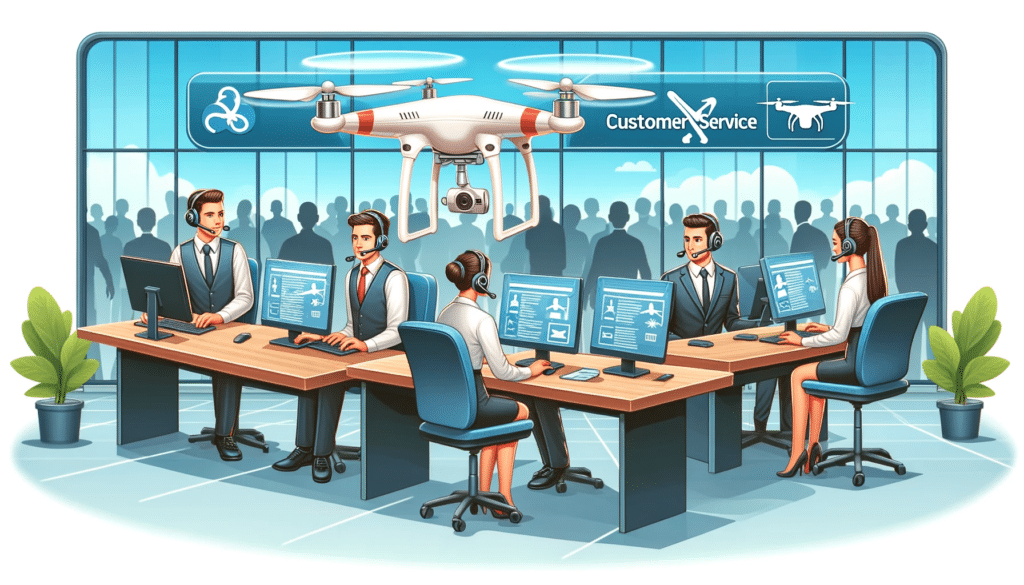
Excellence in Service and Support in the Drone Business
Achieving a high standard of service and support is critical for reputation, client retention, and competitive differentiation in the drone industry. Here are key strategies to ensure your drone business stands out through exceptional service and support:
Strategies for Superior Service and Support
Ongoing Professional Development: Regularly update your knowledge and skills in the drone industry. Engage in continuous training to offer advanced and effective solutions.
Quality Equipment Investment: Invest in high-grade drones and accessories for reliable results. Keep your gear well-maintained and updated to ensure top performance.
Emphasis on Safety: Strictly adhere to safety best practices and regulatory compliance. Implement thorough risk assessments and emergency plans for safe operations.
Transparent Agreements: Develop clear contracts and documentation, detailing service scope and expectations. This transparency aids in managing client expectations and minimizing disputes.
Customized Service Offerings: Tailor your drone services to align with individual client needs and objectives. Personalization shows commitment to client satisfaction and sets you apart.
Accessible Communication Channels: Ensure you are easily contactable through various communication means. Prompt responsiveness to inquiries and concerns builds trust and reliability.
Robust Client Support: Establish a comprehensive support system for queries and technical assistance. Offer services like training and troubleshooting for smooth drone operations.
Commitment to Improvement and Innovation: Continually assess and refine your business practices based on client feedback. Strive for innovation to maintain a leading edge in the drone industry.
By prioritizing these elements, your drone business can deliver exceptional service and support, fostering a reputable brand and a loyal client base. This commitment to excellence is crucial for thriving in the competitive drone marketplace.
Scaling and Growing Your Business
Once you have established your drone venture and fostered a devoted client base, the subsequent measure is to prioritize expanding and augmenting your enterprise. This segment will encompass tactics for broadening your services and propositions, amassing a team, and sustaining competitiveness in the drone industry. By adhering to these methodologies, you can elevate your drone enterprise to the succeeding tier and accomplish long-standing triumph.
Assembling a Dynamic Team for Drone Business Growth
As your drone business flourishes, developing a dynamic team becomes vital to handle growing demands and provide diverse services. A skilled and committed team enhances your operational efficiency and service quality. Below are essential strategies for creating a strong team for your drone enterprise.
Key Strategies for Team Building
Identifying Roles and Responsibilities: Define specific roles required for your business growth, such as drone pilots, data analysts, and customer service staff. Develop clear job descriptions to facilitate smooth operations and teamwork.
Recruiting Skilled Professionals: Seek candidates with relevant experience and qualifications that match your business needs. Value industry expertise and a proven track record in similar roles.
Promoting a Positive Work Culture: Cultivate an inclusive and supportive work environment that encourages collaboration and communication. This approach helps in attracting and retaining talented individuals.
Training and Professional Development: Invest in your team’s growth through continuous learning and skill enhancement. Offer training programs to keep them updated with the latest drone technology and industry practices.
Setting Performance Standards: Establish clear performance metrics and objectives for team members. Regular performance reviews and feedback are essential for growth and improvement.
Empowering Through Delegation: Delegate responsibilities effectively, allowing team members to take charge of their tasks. Empowerment fosters accountability and a sense of ownership among staff.
Encouraging Open Communication: Create an environment where feedback and ideas are openly exchanged. This helps in identifying issues early and encourages innovative thinking.
Acknowledging and Rewarding Success: Recognize and reward the hard work and achievements of your team. Celebratory gestures and rewards can motivate and maintain high morale.
By implementing these strategies, you build a cohesive and capable team that can significantly contribute to the scalability and success of your drone business. An effective team not only enhances operational capacity but also solidifies your position in the competitive drone industry.
Broadening the Horizon: Diversifying Your Drone Business Services
As your drone enterprise grows, diversifying your services and offerings is key to meeting evolving client demands and staying ahead in the competitive drone market. Expanding your service portfolio not only increases revenue potential but also broadens your client reach. Here’s a guide to effectively enhancing your drone business services.
Strategies for Service Expansion
Assessing Market Trends and Opportunities: Stay ahead by continuously researching market trends, new technologies, and emerging opportunities in the drone sector. Understanding market dynamics ensures alignment with client needs and industry advancements. Go here to learn more about future trends in the Drone Industry.
Introducing Complementary Services: Expand your range by adding services that complement your existing offerings. For example, if aerial photography is your forte, consider adding video editing or 3D modeling.
Upgrading Technology and Equipment: Invest in cutting-edge drones, sensors, and software to offer specialized, niche services. Advanced technology enables you to provide innovative solutions and cater to specific market segments.
Forging Strategic Alliances: Partner with other businesses or professionals to broaden your service range. Collaborations can open doors to comprehensive offerings like combined surveying solutions or event coverage.
Personalizing Service Offerings: Tailor your services to meet unique client requirements, differentiating your business in the marketplace. Customization addresses specific client needs, enhancing satisfaction and loyalty.
Developing Skills and Knowledge: Enhance your skills through workshops, seminars, and industry events. Continuous learning ensures your services remain relevant and competitive.
Marketing Your Enhanced Services: Utilize various channels to promote your new offerings, ensuring current clients are informed. Effective marketing of your expanded services attracts new clients and retains existing ones.
Monitoring and Adapting: Regularly review the performance of your new services using customer feedback and sales data. Adaptation based on performance metrics ensures services remain client-focused and profitable.
By expanding your drone business services, you cater to a diverse client base, increase revenue, and foster sustainable growth. Embrace these strategies to elevate your drone enterprise to new heights.
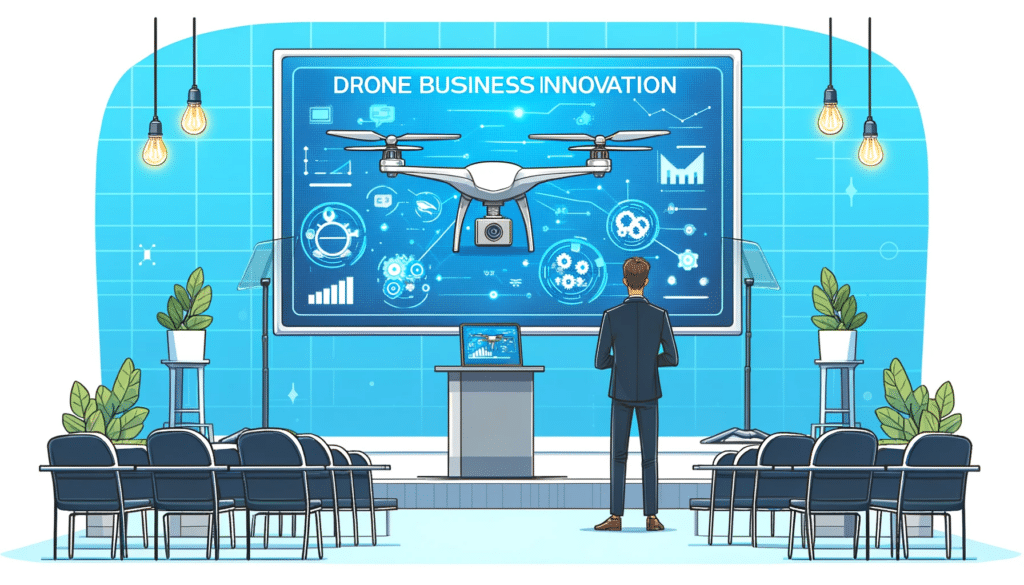
Nurturing Innovation and Competitive Edge in the Drone Industry
To thrive in the dynamic drone industry, it’s crucial to foster innovation and maintain competitiveness. Adapting to changes and consistently enhancing your business will set you apart. Here’s how you can stay innovative and competitive in your drone operations.
Embracing Technological Advancements
- Stay Updated with Industry Advancements:
- Keep abreast of the latest drone technologies and trends.
- Incorporate cutting-edge technologies to meet evolving client needs.
Fostering a Culture of Innovation
- Encourage Creative Thinking:
- Promote a workspace where your team can freely exchange ideas.
- Support innovative problem-solving to enhance services and customer experiences.
Investing in Research and Development
- Focus on Continuous Improvement:
- Allocate resources towards research and development.
- This investment can lead to operational efficiencies and enhanced client satisfaction.
Competitive Analysis
- Keep an Eye on the Market:
- Monitor competitors and stay informed about industry shifts.
- Use insights to distinguish your services and adopt best practices.
Leveraging Client Insights
- Gather and Implement Feedback:
- Actively seek and incorporate client feedback.
- Use these insights to refine your services and meet client expectations.
Streamlining Operations
- Review and Optimize:
- Regularly assess internal processes.
- Implement improvements to reduce costs and increase productivity.
Networking and Collaboration
- Engage with Industry Peers:
- Participate in industry events and forums.
- Collaborate and share insights, fostering relationships that can lead to innovation.
Measuring Innovation Impact
- Track Innovation Outcomes:
- Set and regularly review key performance indicators (KPIs) related to innovation.
- Adjust strategies based on these metrics to ensure ongoing improvement and growth.
By prioritizing innovation and staying attuned to industry trends, your drone business can lead the market, attract and retain a diverse client base, and secure sustained success.
In summary, building and growing a successful drone business requires careful planning, strategic marketing, and a commitment to ongoing education and adaptation. From understanding the market landscape to effectively managing operations, the insights shared in this guide can help you navigate the challenges and seize the opportunities in the drone industry.
If you’re ready to elevate your drone business, consider joining our nationwide pilot network. With zero cost to join, you can start your journey without any financial barriers. Enjoy the flexibility of a work schedule that suits your lifestyle, access extensive support and training resources, and benefit from a lucrative revenue share model that allows you to earn more compared to traditional networks.
As part of our collaborative community, you’ll work with cutting-edge technology and connect with other professionals committed to raising industry standards. Whether you’re looking to operate part-time or grow into a full-fledged business, our program offers the flexibility and support you need.
Visit our Pilot Network page today to learn more about how you can enhance your skills, maximize your earnings, and join a thriving community in the dynamic world of drone piloting.
